Make Liquid Soap At Home Without a Stick Blender (recipe building and tutorial)
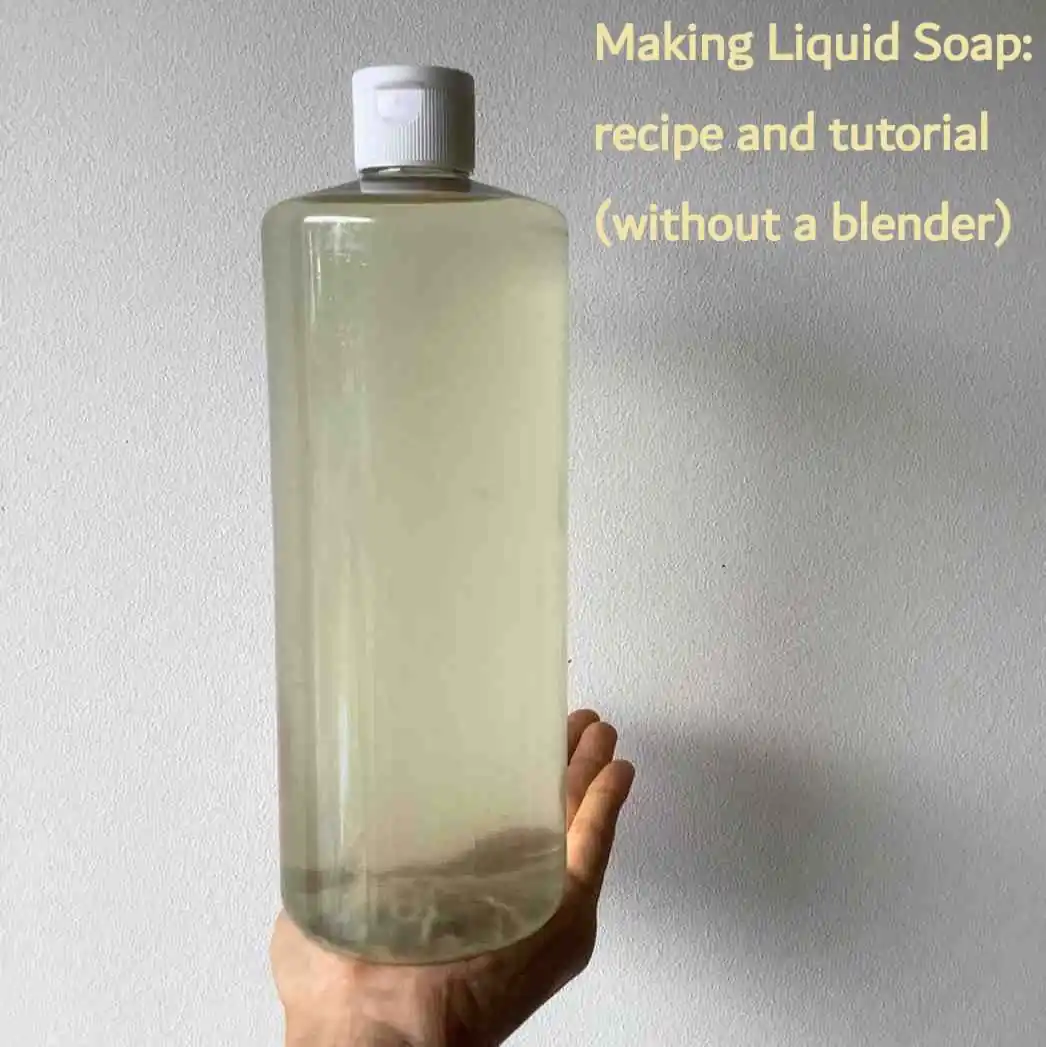
We want to share with you how we make liquid soap that is hypoallergenic and fragrance-free. This gentle soap is perfect for doing dishes and hand-washing clothes. Unlike what you might think, the final product of a liquid soap is actually in paste form. This paste is then dissolved in water to create liquid soap. We will show you our entire process from calculating the recipe, to the steps of soapmaking from start to finish, to how we dissolve the soap paste to make liquid soap.
If you are new to soapmaking, please read our beginner’s guide to get started and reference the soap terms and definition list if you do not understand certain words.
Video Guide
You can also watch it on Youtube.
Building the recipe
We recommend you to make your own soap recipes and then double check the recipes with Soapmaking Friend. Below is how we build our recipe for your reference.
Soap = Lye solution + Oil (this recipe will have no additives, e.g. fragrances, colourants, etc.)
For liquid soap making, potassium hydroxide (KOH) is used instead of sodium hydroxide.
Oil
We are using 300g of coconut oil. KOH saponification (SAP) value of coconut oil = 0.257
Lye
KOH we have has a purity of 90%.
Superfat – we will add 1% superfat in the form of a lye discount.
KOH needed in recipe:
oil x SAP value ÷ purity x (100% - superfat)
300g x 0.257 ÷ 90% x (100% - 1%) = 84.81g
Water
When we experimented, a ratio of 1.5 : 1 resulted in oil and lye separation at first and after mixing further the batter seized to become very hard chunk. It did relax into a workable paste after resting overnight. Therefore, we do not recommend you use such a low water : lye ratio for this 100% coconut oil liquid soap.
Water : lye ratio we will use is 3 : 1.
Water needed in recipe:
KOH x (water : lye ratio)
84.81g x (3 : 1) = 254.43g
Final recipe
Coconut oil = 300g
Potassium hydroxide (90% purity) = 84.81g
Water (we used soft tap water) = 254.43g
Detailed liquid soap recipe
Notes
- read beginner’s guide to soapmaking if you need
- build your own recipes – use ours only as reference
- lye is corrosive! Read about lye safety.
Coconut Oil Liquid Soap (fragrance-free)
Materials
- 300g coconut oil
- 94.81g potassium hydroxide (90% purity)
- 254.43g water (we used soft tap water)
- 1% superfat (calculated as lye discount)
- (this recipe has no additives, e.g. fragrances, colourants, etc.)
Tools
- Safety gear (rubber gloves, safety goggles, mask)
- Scale
- Lye safe containers x 3 (stainless steel, polypropylene, HDPE)
- Lye safe stirring utensil (stainless steel, silicone)
Steps
- Build your recipe and use Soapmkaing Friend to double check your math
- Prepare your workstation with all your tools, materials and safety gear
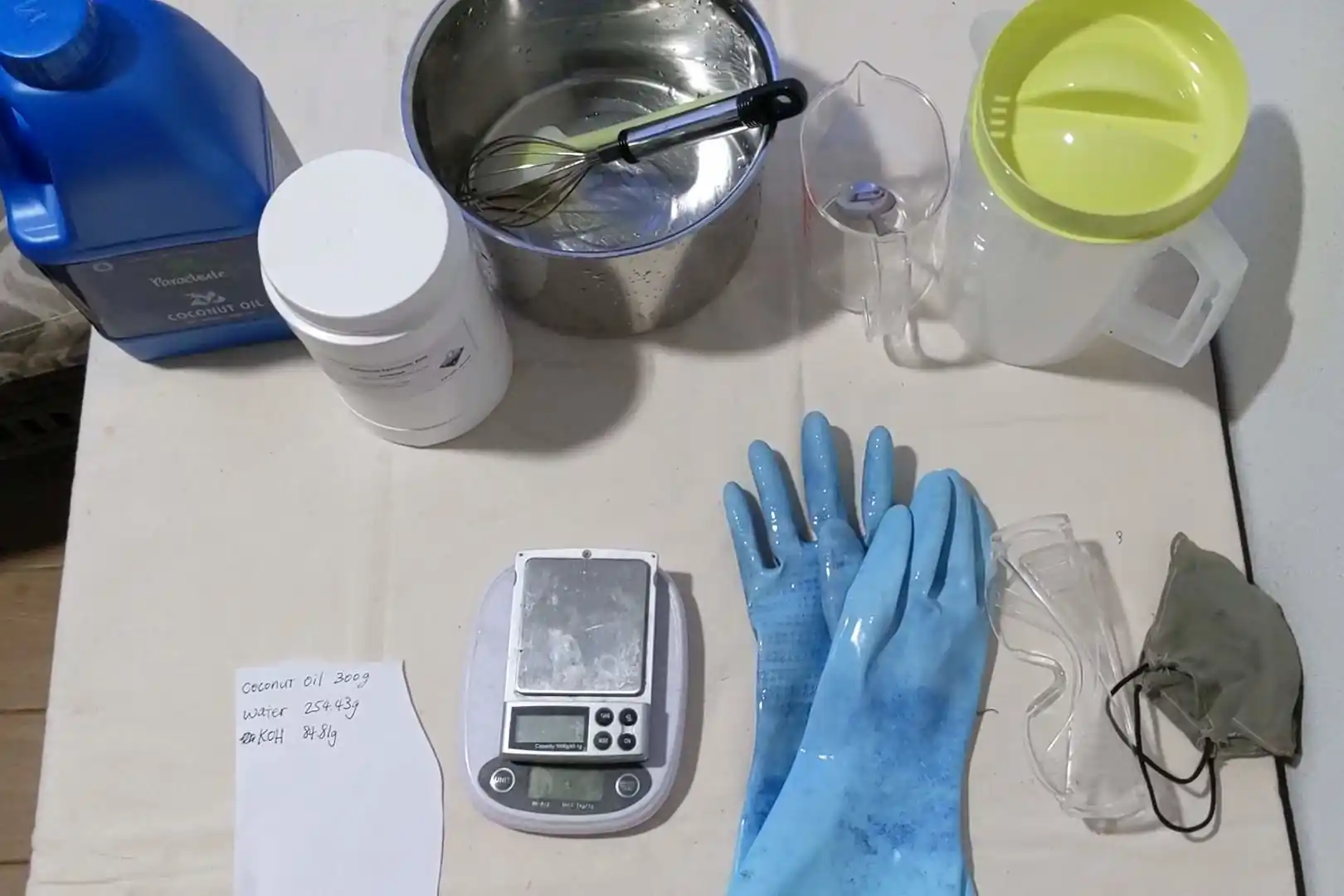
- Weigh out the exact amount of water into a lye safe container, set it aside
- Weigh out the exact amount of oil into a lye safe container, set it aside
- Put your safety gear on (make sure you are also wearing long sleeves)
- Weigh out the exact amount of KOH into an empty and dry lye safe container
- Slowly pour KOH into water (never the other way round), cover it with a lid to protect yourself from the fumes
- After KOH and fully dissolved, slowly pour lye solution into the oil and stir. At first, colour of oil will become creamier, and then the consistency will gradually turn thicker.
- After 30 minutes of hand stirring (it will take longer for bigger batches and if room temperature is low), the soap batter will reach a thick pancake batter like consistency and a white colour. This is a good place to stop stirring as the oils have fully emulsified with the lye.
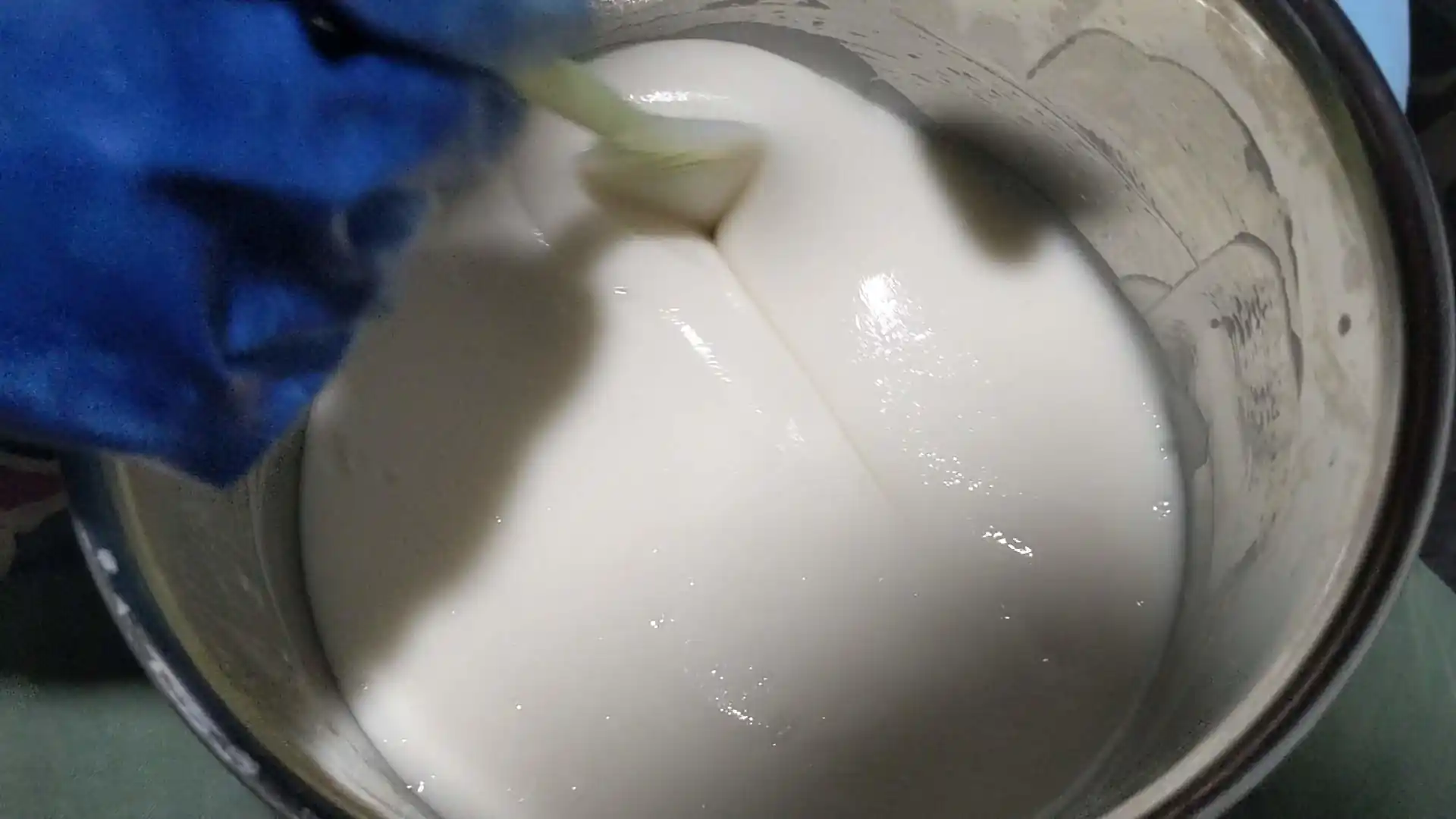
- Cover the container with foil and a towel, set it aside for at least 12 hours
- After 12 hours, it should now be a thick packs with a off white creamy colour
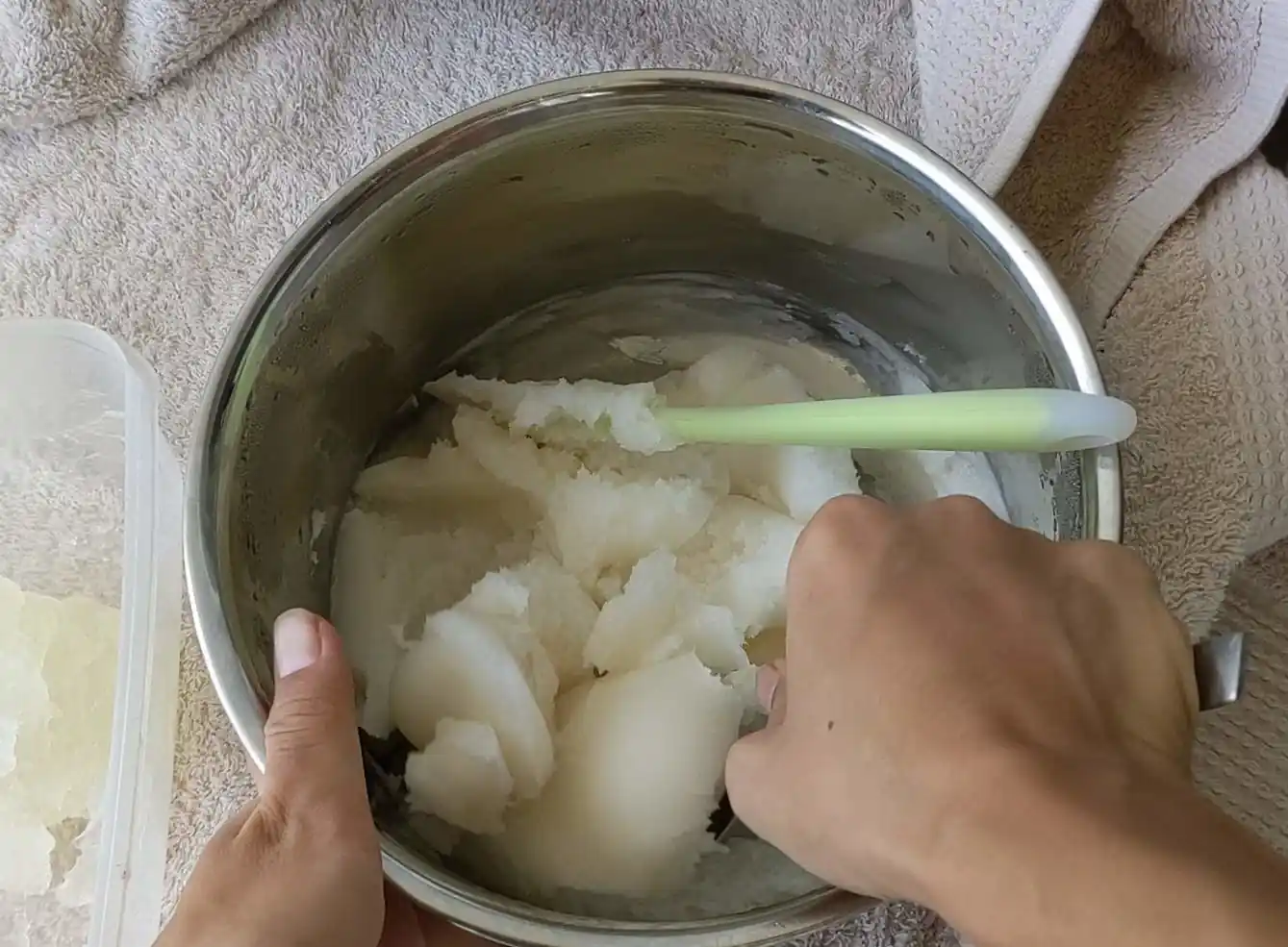
- Transfer soap paste into an airtight container and leave it for 3 weeks until it becomes more translucent. This is important as we did not use heat in this video so the soap paste needs extra time to let excess lye settle and for its pH to drop to a more gentle level.
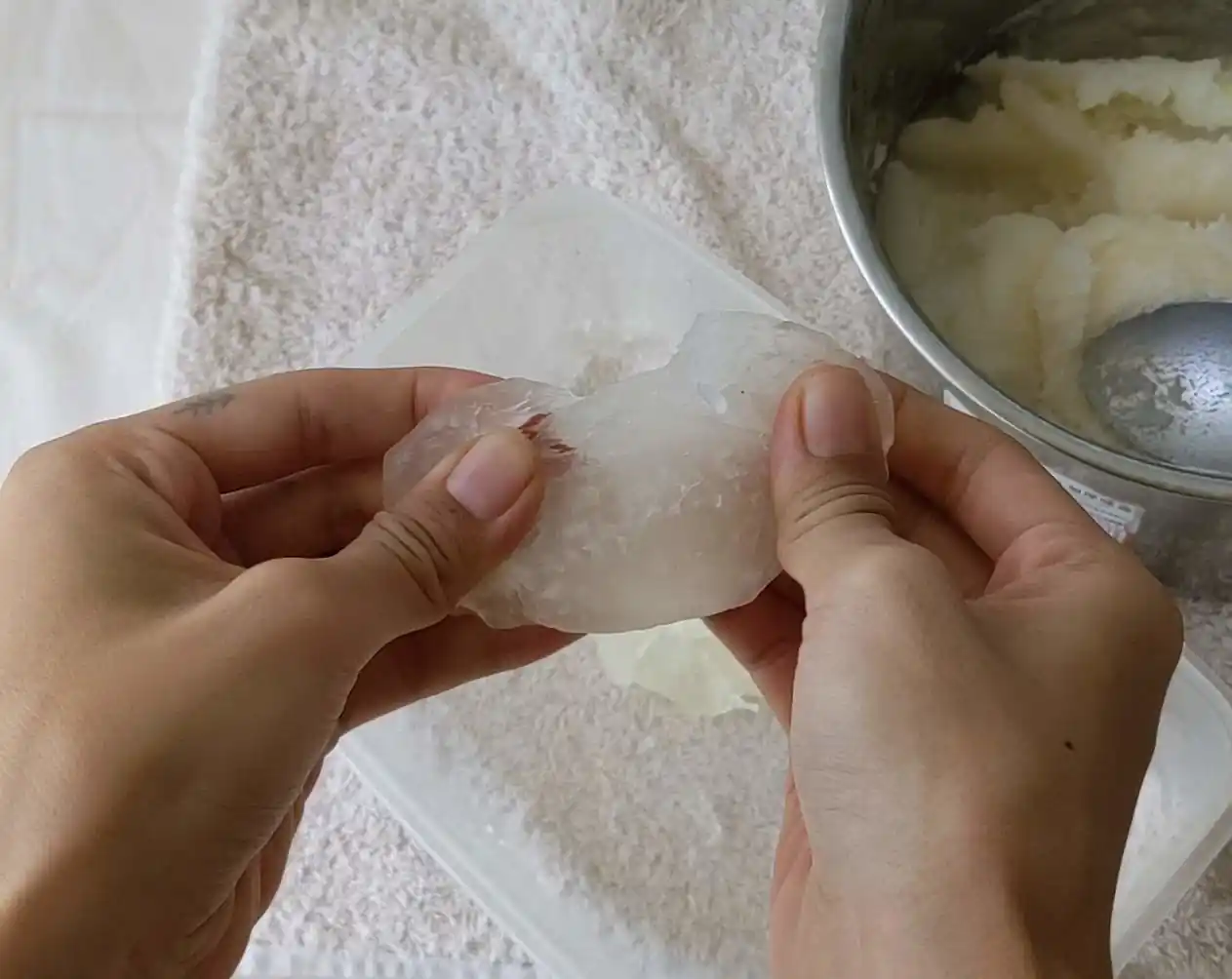
- To clean up, leave containers that have come into contact with lye untouched for at least 24 hours. All excess lye will be neutralised by then, wash as normal.
Dilution
- Dishes and tough stains – 1 : 1, soap paste : water ratio (e.g. 100g of soap paste with 100g of water)
- Hand-washing clothes – 1 : 2, soap paste : water ratio (e.g. 100g of soap paste with 200g of water)
Let the soap paste dissolve in water overnight. It may appear cloudy at first, but the liquid will clear up (sequester) in a few days. However, if you used hard water to dissolve the soap paste, it may remain cloudy.
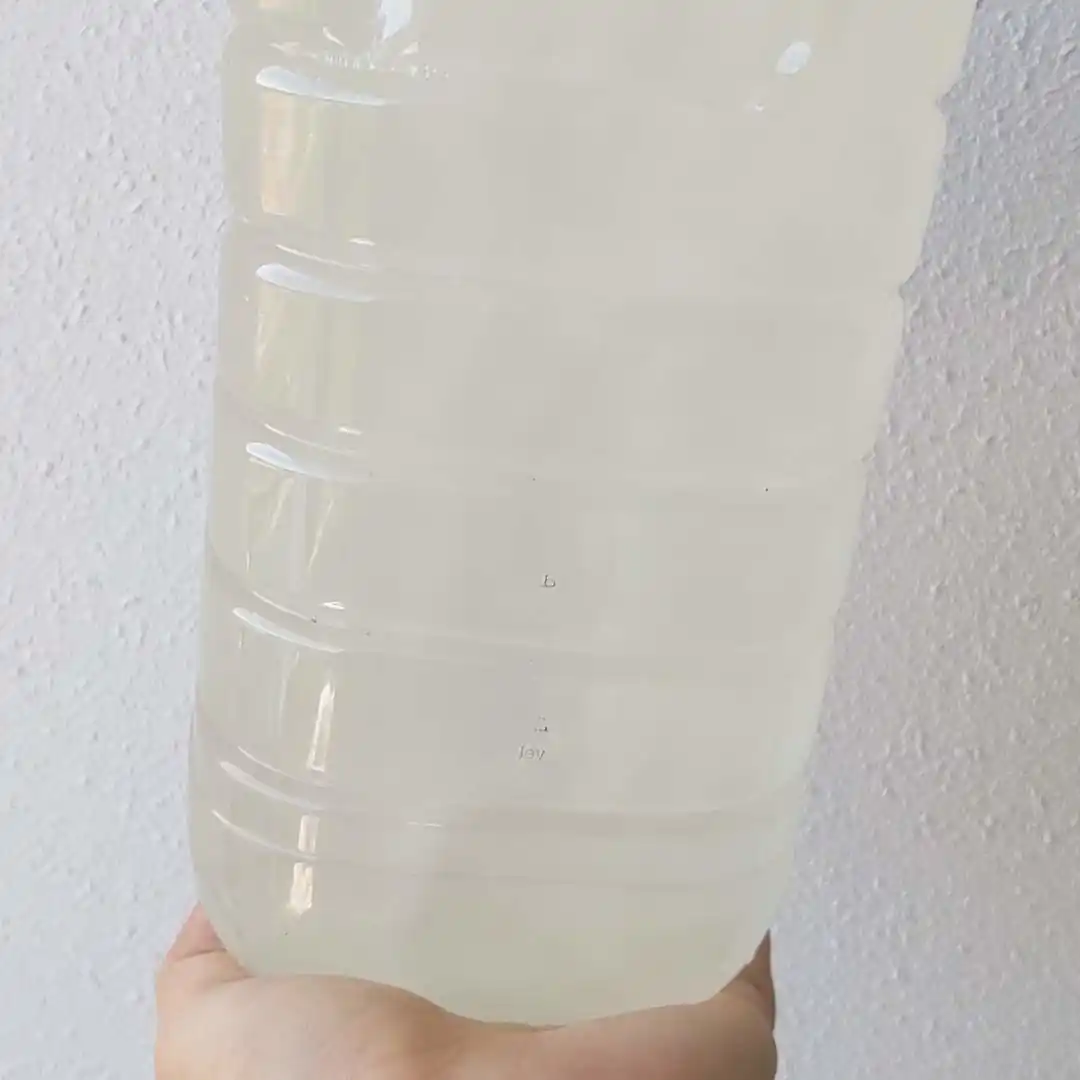

Download PDF version of liquid soap recipe (without images)
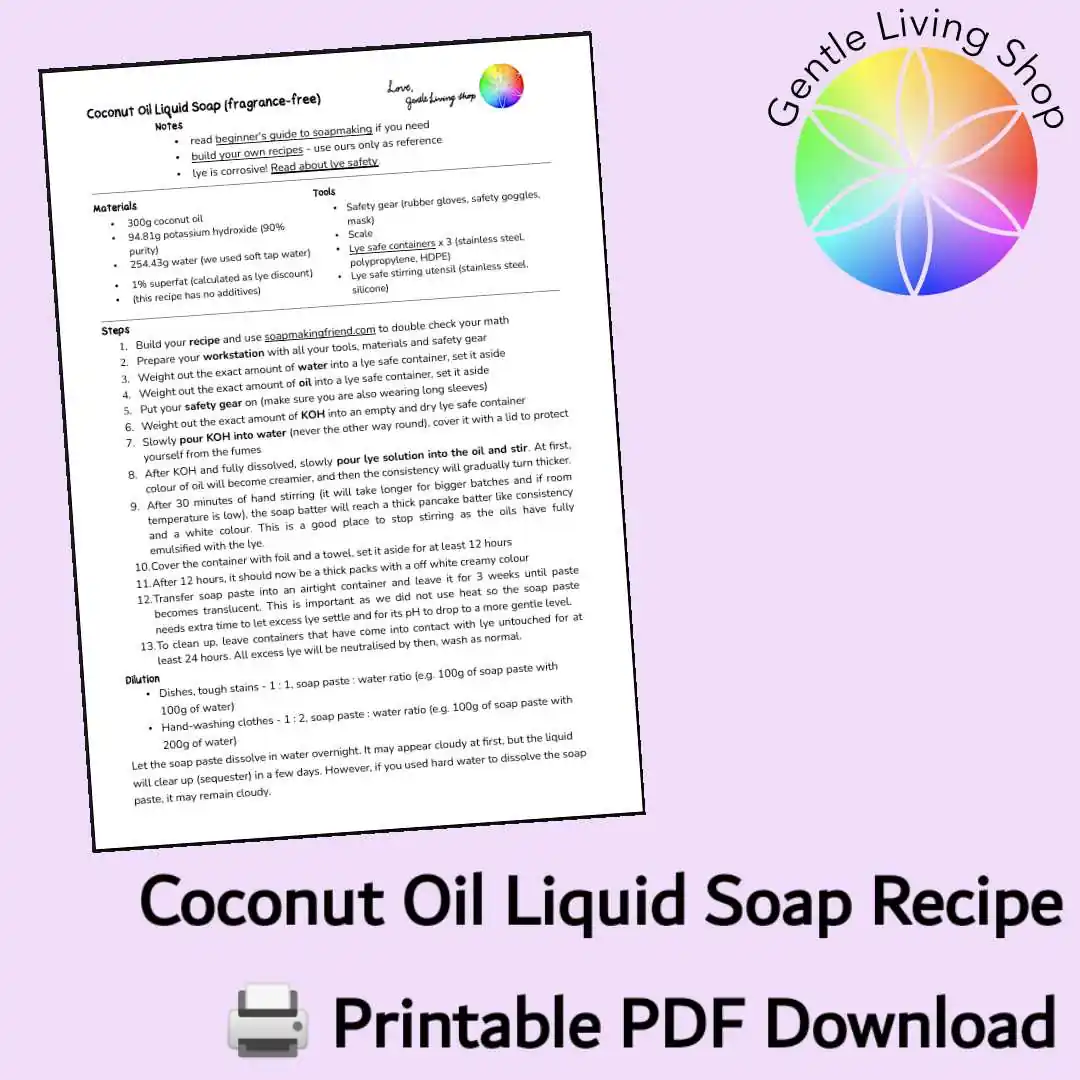

 Gentle Living Shop
Gentle Living Shop